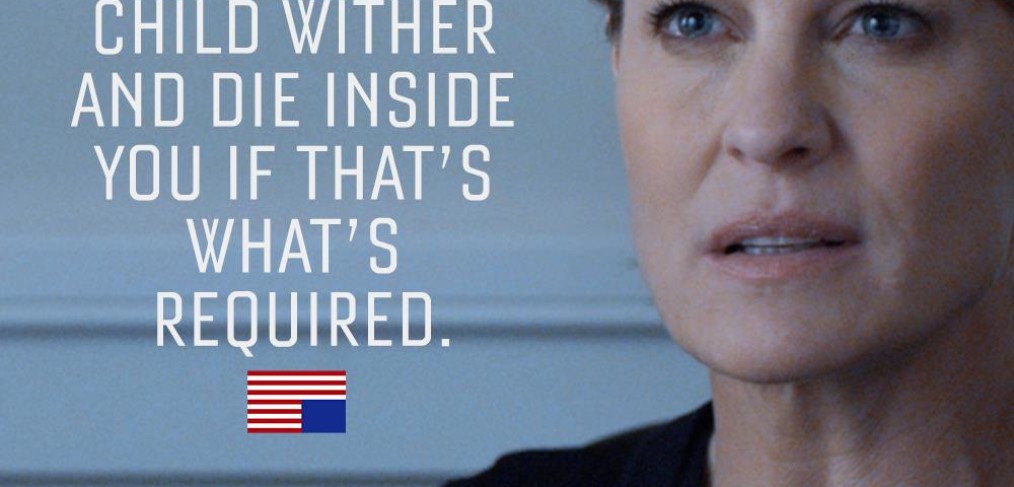
The design that will change us all
This month the online platform Netflix released the last season of the hyped tv-series “House of cards”, which I once started to watch but don’t plan to finish.
If you are one of the few who has never heard of it before, all that you need to know is that it is not made for those who like to believe in human good will. Although I considered myself quite a cynical before, by watching these series I realised that I prefer to cover my eyes and believe that we can all be better human beings that the ones portrayed there.
That may not seem related at all with design, but mentioning it was needed to set the tone to introduce the real subject of the article: design for behaviour change. Leaving “House of cards” behind and hoping that the world that shows is (almost) all fiction, let’s focus on how this discipline of design can make us all better citizens. Because that is what, in a nutshell, design for behaviour change is: triggering better behaviours in all of us by applying design.
When the world of design realised that the strength of industry was not in its knowledge about production or aesthetics but in that about the user, a new path opened for further investigation about the human behaviour from a design perspective. Nowadays, design for behaviour change is already a big category within the field, with subcategories such as Mindful design or Persuasive technology.
As far as designers know about users, this category owes its basis to Behavioural Science. This science studies human choices, or said in other words, why people do what they do. Behavioural Science does it by putting together knowledge and methods from disciplines such as Psychology, Economics, Sociology or Neuroscience. But the information that this science generates can be used in many ways, from making a publicity campaign more successful, to tackling serious civic issues in a city. The last direction is where Design for behavioural change heads.
But what can Design for behaviour do for us?
The experts of the field aim to solve the biggest issues in society, such as child obesity or climate health by designing products, services or even places. This is possible when you understand that most of us follow a pattern of choice and go through life by developing habits. Designers with knowledge about Behavioural Science know how our ‘mechanism of choice’ works and how to trigger or persuade us to change it. The first thing the pioneers in the field did was throw away many traditional beliefs about people, such as that we are ruled by selfishness and we are not interested in others’ wellbeing. They realised that the influence our environment and social and economic networks had on us was way more powerful than our consciousness. Based on this knowledge and on other theories that dig deeper in our minds, designers all over the globe are trying to make us loose our bad habits to make more positive choices for society.
How does it actually do it?
Once explained the theory, is the moment to see all this applied. Most of the experts in the field have developed their own theory, tool or series of steps that have to be followed in order to create a design that tackles human behaviour. Because of this, there are way more design methods and toolkits about the matter than what I am able to show in the space of this post so, if by now you are interested in the topic, feel free to get lost in the hyperspace and explore the numerous examples. If you do this, you will probably bump into the “Design with Intent” toolkit, as is one of the popular ones. Its popularity may be because it collects a baste amount of knowledge about influencing behaviour through design, being still very functional.
Compound by 101 cards grouped in different categories, the toolkit can be applied in many fields but it is specifically designed to tackle social and environmental behaviour changes.
Some other famous examples that make us see the impact of design for behaviour change, no matter if we are designers or not, can be found in the website for the Volkswagen’s interesting project, ‘Thefuntheory.com’. These guys are the authors of the viral video ‘Piano stairs’, where they perfectly portray their theory that fun is a powerful tool to shape people’s behaviour. This may be just a short term example, but it definitely shows that the power of design to guide people’s actions shouldn’t be underestimated. Now, as users, all is left for us to do is to embrace positive change and be critical with who may be using Behavioural theories with us; you never know if it was the marketing department who actually chose that new car for you.
Products and links mentioned:
Design with Intent toolkit
Lockton, D., Harrison, D., Stanton, N.A. (2010) Design with Intent: 101 Patterns for Influencing Behaviour Through Design v.1.0, Windsor: Equifine
http://designwithintent.co.uk/introduction-to-the-design-with-intent-toolkit/
Thefuntheory.com





